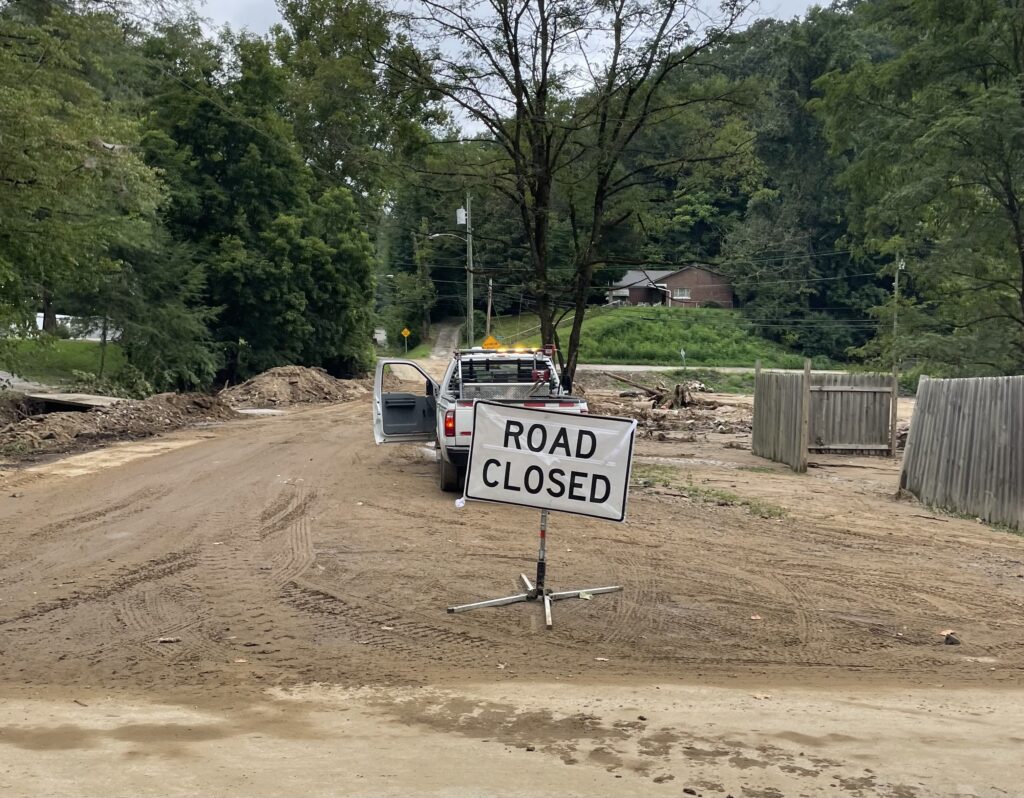The National Weather Service received its first call about the flooding at 6:45 a.m. Monday after rain blanketed eastern Kanawha County through the weekend.
The storm intensified early Monday, by which point the soil was saturated and water was running off the mountain. The communities around Slaughter, Witcher, Fields, Kelly and Horse Mill Creek had six to nine inches of precipitation through Monday morning.
As the water moved down the hills and into creeks beds, it brought debris with it. The more water, the more debris.
Eventually those waterways backed up, and when the water had nowhere else to go, it went into people’s homes, cars, farms and gardens.
Ray Lyons’ home is off Kelly Creek in Mammoth, the location that saw the most rain during the storm Monday. Flood waters came within five feet of his house and flooded his acre-wide vegetable and fruit garden.
“It just came up so fast. Within two hours — and it just kept coming,” Lyons said.
He said during the rain he worked to keep debris, like logs and large mud deposits, out of the road in front of his house so that cars could get through — and escape the flooding.
Eventually the road became too deep with water to pass.
“A lot of people couldn’t get through, and that, oh, that was terrible,” he said.
After the flood, Lyon and his cousin worked with an excavator to dig debris out of the creek to help drain water off the land.
“State [crews] didn’t come up. But you know, I can take care of it, I have lived up this holler my whole life,” he said.
Further downstream from Lyon’s home, in the town of Cedar Creek, the water breached the banks and flooded the land around the confluence of Horsemill Creek and Kelly Creek.
Most of the damage in the area that was accessible Tuesday was a gravel parking lot. It had been completely stripped of gravel during the floods and was a muddy bog on Tuesday.
Ken Barton was on site, leaning against a dump truck with a cane in hand. He used to be mayor, but on Tuesday he was working with construction crews wearing bright yellow “Town of Cedar Creek” shirts and reflective overalls.
“You can see where all the mud and everything is,” Lyon said. “The water came out this way, pushed all this stuff over here.”
He said the mayor asked him and the rest of the crew to head down and help the state crews. His crews worked alongside state crews to clean up the damage and restore the banks of the creek.
“These are our people, we have to help,” Barton said.
Several homes were lost, and more were damaged in Monday’s flood.
On Monday, there were more than 700 calls and 22 water rescues. Some towns saw roadways turn into rivers. Access to these towns is still limited as of Wednesday, and crews are working to open roadways that were blocked by fallen trees and mudslides.
The damage assessment process began Tuesday, and officials are beginning the process of working with the Federal Emergency Management Agency (FEMA) and other national and state agencies to get money back to the communities to help with recovery and cleanup.






















